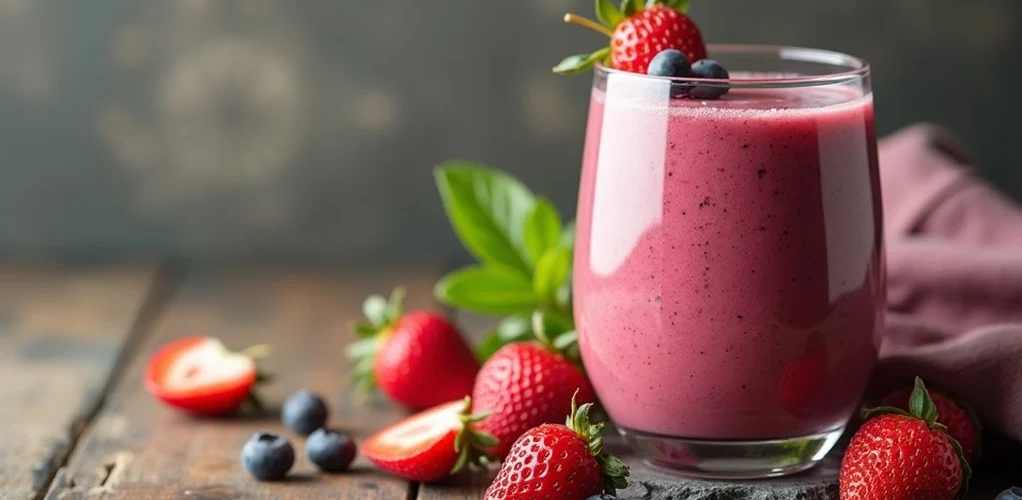
Creating a low-carb smoothie starts with selecting an unsweetened liquid base like almond or coconut milk, then adding protein-rich ingredients such as Greek yogurt or protein powder. Incorporating healthy fats from avocados or nut butter enhances satiety, while leafy greens provide nutrients without excess carbs. Berries offer natural sweetness with minimal sugar impact, and natural sweeteners like stevia can be added for taste. Understanding these fundamental elements opens the door to countless nutritious combinations.
Key Takeaways
- Start with unsweetened almond or coconut milk as your liquid base to keep carbohydrates low while maintaining smooth consistency.
- Add healthy fats like avocado, nut butter, or chia seeds to create creaminess and increase satiety.
- Choose low-carb fruits like berries, and incorporate leafy greens for nutrients without excess sugar.
- Include protein sources such as Greek yogurt or protein powder to build a filling, nutritionally balanced smoothie.
- Layer ingredients properly: liquids first, then soft items, followed by frozen ingredients for optimal blending results.
Understanding Low-Carb Smoothie Basics
The foundation of creating successful low-carb smoothies lies in understanding the essential components that make them both nutritious and satisfying while maintaining minimal carbohydrate content.
Low-carb smoothie recipes begin with a liquid base of unsweetened almond milk or coconut milk, which provides creaminess without adding significant carbohydrates. The addition of healthy fats, such as avocado or nut butter, enhances satiety and creates a smoother texture.
Incorporating protein powder or Greek yogurt helps build a complete nutritional profile while keeping carbs in check. Leafy greens like spinach and kale add valuable nutrients and fiber without substantially increasing the carbohydrate count, while berries offer natural sweetness with minimal impact on blood sugar levels.
Natural sugar alternatives can provide additional sweetness when needed. Each smoothie offers a unique taste profile while adhering to keto-friendly guidelines, making them enjoyable and nutritious.
Essential Low-Carb Ingredients and Alternatives
Making the switch to low-carb smoothies begins with understanding smart ingredient substitutions that maintain satisfaction while reducing carbohydrate content. The foundation of any successful low-carb smoothie lies in choosing nutrient-dense liquid bases, such as unsweetened almond milk or coconut milk, which provide creaminess without excess sugars. These thoughtful substitutions, combined with strategic ingredient choices like berries and leafy greens, create satisfying smoothies that align with low-carb dietary goals while delivering essential nutrients. Incorporating healthy oils like avocado oil can further enhance the nutritional profile of your smoothie, offering heart health benefits and aiding in inflammation reduction.
Smart Carb-Swapping Basics
While creating a delicious low-carb smoothie requires careful ingredient selection, understanding smart substitutions can make the process both simple and effective. Replacing high-carb ingredients with nutrient-dense alternatives maintains flavor while reducing sugar content. Low-carb fruits like berries provide natural sweetness, while unsweetened almond milk offers a creamy base without excess carbohydrates. Incorporating leafy greens adds essential nutrients, and Greek yogurt delivers protein with fewer sugars than conventional options. Healthy fat sources, such as avocado, enhance texture and satiety.
| Original Ingredient | Low-Carb Swap | Benefits |
|---|---|---|
| Banana | Berries | Lower sugar, high antioxidants |
| Regular Milk | Almond Milk | Fewer carbs, dairy-free |
| Regular Yogurt | Greek Yogurt | Higher protein, less sugar |
Nutrient-Dense Liquid Foundations
Selecting appropriate liquid foundations sets the stage for a successful low-carb smoothie experience.
For those seeking nutrient-dense options, unsweetened almond milk stands out with just 1 gram of net carbs per cup, while unsweetened coconut milk offers healthy fats with only 2-3 grams of net carbs per serving.
Greek yogurt serves as an excellent creamy base, delivering 6-8 grams of protein while keeping carbs low at 4-6 grams per half-cup.
For additional nutritional benefits while remaining low in carbs, vegetable-based liquids created from spinach or kale blended with water provide essential vitamins and minerals.
These foundations can be enhanced with frozen berries or ice for improved texture, as berries contain minimal carbohydrates while contributing natural sweetness and flavor to the smoothie.
Best Fruits and Vegetables for Low-Carb Blending
Creating low-carb smoothies requires strategic selection of fruits and vegetables that offer maximum nutritional benefits while keeping carbohydrate content minimal. Berries emerge as the standout fruit choice, with strawberries, blueberries, and raspberries providing essential antioxidants and fiber while containing only 6-8 grams of carbs per cup serving. Incorporating nutrient-dense vegetables like spinach, cucumber, and zucchini can enhance the smoothie's volume and nutritional profile while contributing minimal carbohydrates, typically 4 grams or less per cup. In addition, using non-starchy vegetables such as broccoli and cauliflower can further support nutrient intake without disrupting low-carb goals.
Low-Sugar Fruit Choices
Making smart fruit and vegetable choices forms the foundation of any successful low-carb smoothie. When selecting ingredients, berries emerge as excellent low-sugar fruit choices, offering antioxidants and fiber while keeping carbohydrate content minimal.
Strawberries, blueberries, and raspberries can be combined with nutrient-dense leafy greens like spinach and kale to create satisfying, vitamin-rich blends.
Avocado stands out as a versatile fruit option, providing healthy fats and creamy texture without increasing sugar content. For additional freshness and flavor enhancement, cucumbers offer hydration and minimal calories, while citrus fruits such as lemons and limes can brighten the taste profile without greatly impacting carbohydrate levels.
These carefully selected ingredients guarantee smoothies remain both nutritious and compatible with low-carb dietary goals.
Nutrient-Dense Veggie Options
While building a nutritious low-carb smoothie requires careful ingredient selection, vegetables emerge as essential components that maximize nutritional value while minimizing carbohydrate content.
Leafy greens like spinach and kale serve as excellent foundational ingredients, delivering crucial nutrients with minimal carbs.
For enhanced creaminess and healthy fats, nutrient-dense avocados provide a smooth texture while keeping blood sugar levels stable.
Hydrating vegetables such as cucumber complement low-carb fruits like berries, creating invigorating combinations rich in antioxidants.
Fibrous vegetables, particularly zucchini, add substantial bulk to smoothies while supporting digestive health and maintaining satiety.
These versatile veggie options can be mixed and matched to create satisfying blends that align with low-carbohydrate dietary goals while ensuring peak nutrition.
Healthy Fats and Protein Add-Ins
A successful low-carb smoothie requires thoughtful consideration of healthy fats and protein sources to create a satisfying, nutritious blend. Essential fats from ingredients like avocado and chia seeds enhance creaminess while delivering crucial fatty acids, while protein-rich additions such as Greek yogurt and cottage cheese support muscle recovery and sustained fullness. Incorporating unsweetened nut milks provides a smooth texture while maintaining low carbohydrate levels, and seeds like flax and hemp offer dual benefits of protein and omega-3 fatty acids. Plant-based protein alternatives such as tempeh and edamame can also be added to increase protein content without adding carbs. For those seeking sweetness without added sugars, natural alternatives like stevia or monk fruit can be incorporated thoughtfully. The combination of these carefully selected fats and proteins creates a balanced smoothie that not only satisfies immediate hunger but also provides lasting energy throughout the day.
Natural Sweeteners That Won't Spike Blood Sugar
Selecting natural sweeteners that maintain stable blood sugar levels proves essential for crafting the perfect low-carb smoothie. Plant-based options like stevia and monk fruit extract offer sweetness without impacting blood glucose, making them ideal alternatives to traditional sugar.
For those seeking variety in their low-carb smoothies, sugar alcohols present viable options. Erythritol contains minimal calories and doesn't affect blood sugar levels, while xylitol provides sweetness with a lower glycemic impact when used in moderation.
While some natural sweeteners like agave nectar and raw honey may seem appealing, they should be used sparingly due to their fructose content and potential to raise blood sugar levels. Instead, focusing on alternatives like stevia or erythritol guarantees smoothies remain both delicious and compatible with low-carb dietary goals.
Sweeteners like allulose offer an additional option for those looking to enhance flavor without disrupting ketosis, providing a minimal impact on blood sugar levels and preserving the low-carb integrity of your smoothie.
Equipment and Tools for Perfect Blending
Creating exceptional low-carb smoothies requires investing in the right equipment and tools for ideal blending results. A high-powered blender stands as the cornerstone tool, effectively processing tough ingredients like frozen fruits and leafy greens into a silky consistency.
For those preparing individual portions, a personal blender offers convenience and easy cleanup.
Precise measurements are essential for maintaining proper nutritional ratios, making measuring cups and spoons vital accessories. A tamper tool helps incorporate ingredients efficiently by pushing them toward the blades during blending.
When storing smoothies, using either glass or BPA-free plastic containers guarantees freshness while preventing any unwanted chemical interactions with acidic ingredients.
Batch cooking techniques streamline meal prep and enhance variety, providing efficient cooking methods that contribute to maintaining a consistent keto diet.
These fundamental tools enable consistent preparation of nutritious, perfectly blended low-carb smoothies.
Step-by-Step Blending Techniques
Mastering the art of low-carb smoothie preparation begins with understanding the proper sequence of ingredient addition and blending techniques. The process starts with pouring liquid ingredients, such as unsweetened almond milk or coconut milk, into the blender first to create a smooth foundation and prevent ingredients from sticking to the bottom.
Next, layer frozen fruits and vegetables on top of the liquid base, ensuring ideal blending results. Using a high-powered blender, process the ingredients for 30-60 seconds, pausing occasionally to scrape down the sides.
For those who prefer thicker smoothies, adding ice cubes or additional frozen ingredients can achieve the desired consistency. Throughout the blending process, adjust the liquid-to-solid ratio until the mixture reaches a smooth, well-incorporated texture. Adding a tablespoon of MCT oil can enhance energy levels and mental clarity, making it a perfect addition to your keto-friendly smoothie.
Time-Saving Preparation Tips
Efficient smoothie preparation begins with pre-portioning frozen ingredients into individual serving bags, which eliminates measuring time and guarantees consistent results. Creating multiple smoothie bags at once during a weekly batch-prep session saves valuable minutes during busy mornings, while also maintaining organized ingredient storage. A vital time-saving habit involves cleaning the blender immediately after use, preventing hardened residue and making the next smoothie preparation faster and more hygienic. Incorporating low-carb vegetables like spinach or kale into your smoothie bags can align with a keto-friendly lifestyle, adding essential nutrients without exceeding carbohydrate limits.
Pre-portion Frozen Ingredients
To save valuable morning time and guarantee consistent smoothie preparation, pre-portioning frozen ingredients into individual servings offers an organized approach to low-carb smoothie making.
By dividing fruits like bananas, berries, and avocado into separate containers or bags, the blender-ready ingredients maintain peak freshness while streamlining the preparation process.
Combining pre-portioned frozen ingredients with nutrient-rich leafy greens creates a healthy foundation for any low-carb smoothie.
Clear labeling of each portion pack with contents and dates helps track freshness and guarantees efficient ingredient selection.
These ready-to-blend portions can be stored in the freezer for up to three months, providing convenient access to nutritious smoothie ingredients whenever needed.
This systematic approach eliminates guesswork and reduces preparation time during busy mornings.
Batch Prep Smoothie Bags
Savvy smoothie enthusiasts can maximize their morning efficiency by preparing multiple smoothie packs in a single session.
Batch prepping allows for convenient storage of pre-portioned ingredients in wide-mouth jars or quart-sized bags, which can be preserved for up to three months in the freezer.
When organizing smoothie packs, properly label each container with contents and preparation date to maintain freshness tracking.
The easy filling process involves measuring ingredients once for multiple servings, saving considerable time during busy mornings.
When ready to enjoy a nutritious drink, simply combine the frozen contents with liquid of choice and optional protein powder.
This streamlined approach transforms a typically time-consuming task into a two-minute blending process, ensuring healthy options remain readily accessible throughout the week.
Clean Blender While Fresh
Cleaning a blender immediately after preparing a smoothie greatly reduces the time and effort required for maintenance, while preventing stubborn residue from adhering to the container and blades. A quick rinse with warm water immediately after use serves as the first step in preventing ingredient buildup.
For efficient cleaning, add a drop of dish soap and fill the blender halfway with warm water to run a self-cleaning cycle for 30 seconds.
To address more challenging residues, blend a mixture of baking soda and water. Always disassemble the blender components, including the blade assembly, to thoroughly clean areas where ingredients might accumulate.
Regular inspection and cleaning of the rubber gasket maintains a proper seal and prevents potential leaks, preserving the blender's ideal performance.
Storage and Make-Ahead Solutions
While preparing low-carb smoothies daily can be time-consuming, smart storage and make-ahead solutions offer convenient alternatives for busy individuals.
Pre-made frozen smoothie packs can be assembled using simple ingredients and stored for up to three months, making it easy to make smoothie preparations in under two minutes.
For ideal storage, combine frozen ingredients like avocado, banana, and leafy greens in freezer-safe containers or bags.
When ready to blend, add protein powder and creamy elements like coconut milk or Greek yogurt.
While smoothies taste best immediately after blending, they can be refrigerated for up to 24 hours.
To maintain consistency, blend liquid ingredients first before adding frozen components, preventing separation and ensuring a perfectly mixed beverage every time.
Popular Low-Carb Smoothie Recipes
Versatility defines the world of low-carb smoothies, with numerous recipes offering delicious alternatives to traditional high-sugar blends. Popular options include the Low-Carb Green Smoothie, combining spinach and avocado with unsweetened almond milk for a nutrient-rich beverage. The Low-Carb Strawberry Cheesecake Smoothie delivers protein and fat through cottage cheese, while maintaining minimal carbohydrates. It's important to choose high-quality ingredients, as seen in keto-friendly chocolate brands, to ensure nutrient density and taste.
| Smoothie Name | Key Ingredients |
|---|---|
| Green Smoothie | Spinach, Avocado |
| Strawberry Cheesecake | Strawberries, Cottage Cheese |
| Chocolate PB | Cocoa, Peanut Butter |
| Citrus Pear | Pear, Frozen Avocado |
| Custom Blend | Protein Powder, Seeds |
These recipes demonstrate how creative combinations of ingredients can yield satisfying beverages while maintaining low carbohydrate content, making them suitable for various dietary preferences and nutritional goals.
Frequently Asked Questions
How Do You Blend Smoothies Easily?
Pour liquid ingredients first, followed by frozen items. Use a high-powered blender for thirty seconds to one minute, scraping sides when needed. These smoothie blending techniques guarantee ideal texture.
What Is the Best Low-Carb Liquid for Smoothies?
Unsweetened almond milk ranks as the ideal low-carb liquid, containing only 1g carbs per cup. Alternative options include coconut milk, hemp milk, unsweetened yogurt thinned with water, and savory broth for unique smoothie variations.
What Can I Add to My Smoothie for Carbs?
Healthy carb options for smoothies include berries, oats, chia seeds, sweet potatoes, and unsweetened yogurt. These ingredients provide balanced smoothie nutrition while offering complex carbohydrates and essential nutrients.
How to Make Fruit Smoothies Sweet Without Sugar?
Frozen fruits and ripe bananas provide natural sweetness, while natural sweeteners like stevia enhance flavor. Adding vanilla or cinnamon as flavor enhancers creates sweeter-tasting smoothie bowls without refined sugar.
Conclusion
Creating delicious low-carb smoothies is both an art and a science that anyone can master with the right ingredients and techniques. By choosing low-glycemic fruits, incorporating healthy fats and proteins, and using natural sugar alternatives, health-conscious individuals can enjoy nutritious smoothies without compromising their dietary goals. With proper storage methods and make-ahead preparations, these revitalizing beverages can become a convenient, sustainable part of a balanced lifestyle, supporting both wellness and weight management objectives.

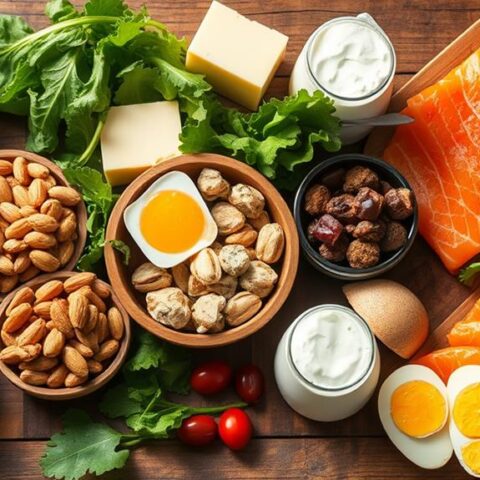


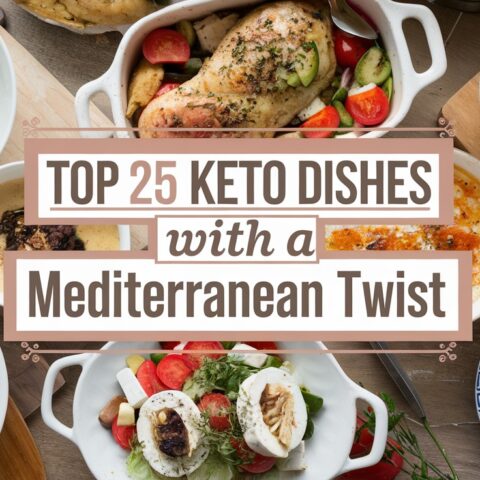
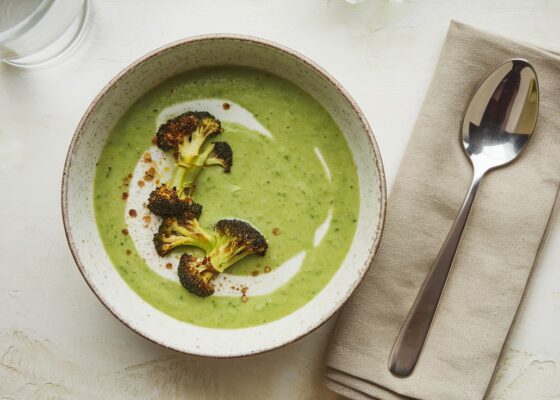

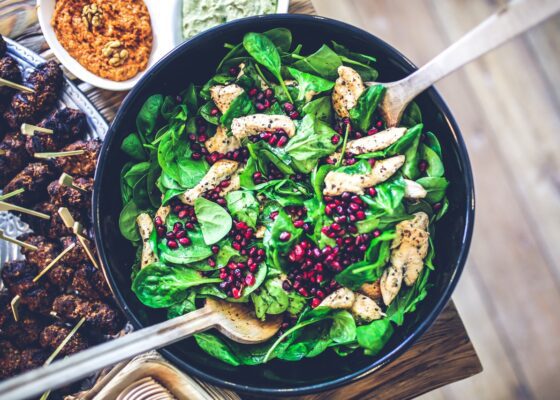

No Comments